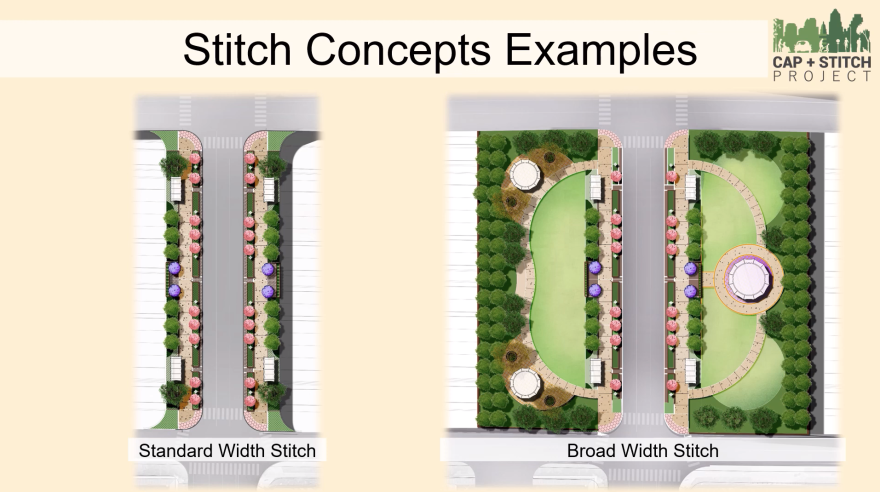Large decks and widened bridges could cover vast swaths of Interstate 35 in Central Austin after the highway is expanded and lowered beneath ground level. Now, the City of Austin is asking for input on what the so-called "caps and stitches" should look like and where they should go.

Stitches are bridges with pedestrian space on each side of the road that could range from 30 feet to 300 feet wide, according to examples given in a 20-minute video posted on the city's new Virtual Open House.

Caps, wide decks with plazas or other amenities, are wider than stitches and could connect with each other to create a continuous covering of I-35, spanning multiple blocks.

Both caps and stitches are strong enough to hold buildings, the city said. One proposal would even construct a raised walkway winding across multiple caps.

A primary aim of the cap-and-stitch project is to increase connections between East Austin and downtown. The two areas have been separated by the interstate since its construction razed homes and businesses in the 1950s, further isolating Black and Latino residents already victimized by segregationist land-use policies.

Earlier this year, city officials were among those hopeful that the Texas Department of Transportation's multibillion-dollar plans to expand I-35 would bury the highway underground through downtown, removing the concrete barrier that cleaves the city's core with a loud flow of traffic.
But when TxDOT unveiled plans this summer, the tunnel option was taken off the table. TxDOT said, among other things, the cost would be too high: about $8 billion compared to around $4 billion for the other two alternatives.
The state highway agency further frustrated Austin's mayor and City Council by declining to pay for what local officials considered the next best thing to a tunnel: covering the highway with plazas and widened bridges.
However, TxDOT said it's willing to work with the city on integrating caps and stitches into the design.
Austin has enlisted Houston-based Arup US, Inc. to conduct a $2 million feasibility study examining how the deck plazas and widened bridges could be constructed and how much weight they could hold. The study's results are expected this spring.
For now, the city has launched a monthlong public-input process including a 22-question survey. You can also skip the survey and email your ideas to ATXCapStitch@austintexas.gov or call 512-974-7898.
Exactly how to pay for the caps and stitches is to be determined. Construction on the I-35 Capital Express Project, as TxDOT calls it, is expected to start in late 2025.









